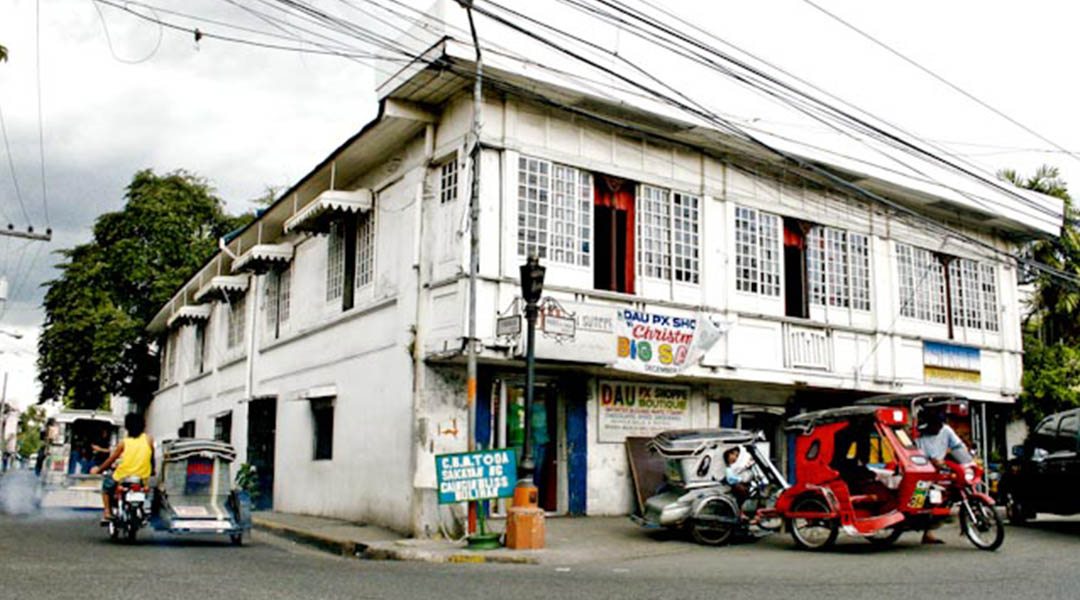
Enduring Legacies: The Bautista and Santos Ancestral Houses of Malolos
Ancestral houses are one of the remaining architectural links that Filipinos have with their historical and cultural legacy. In the case of the people of Malolos City, the capital of Bulacan, the houses along the Pariancillo District (officially known as Barangay Santo Niño), the houses built there during the latter Spanish Colonial Period (of the type called bahay na bato) are not merely indicators of landed wealth and family lineage but are also crucial reminders of the struggle towards political self-awareness and independence from foreign domination during the turn of the previous century. Called Kamistisuhan houses (after their owners, who were mestizo Filipino-Chinese families whose industriousness transformed Malolos into a progressive town by the late-19th Century), these structures date from the mid-late 19th Century to the early 1930s, and whose details catalog the stylistic changes introduced through colonial contact with the West: Neoclassicism segues into Revival Baroque and Victorian ostentation, and then into Art Nouveau elegance, and ends with the surfeit of geometric-organic combinations found in Art Deco.
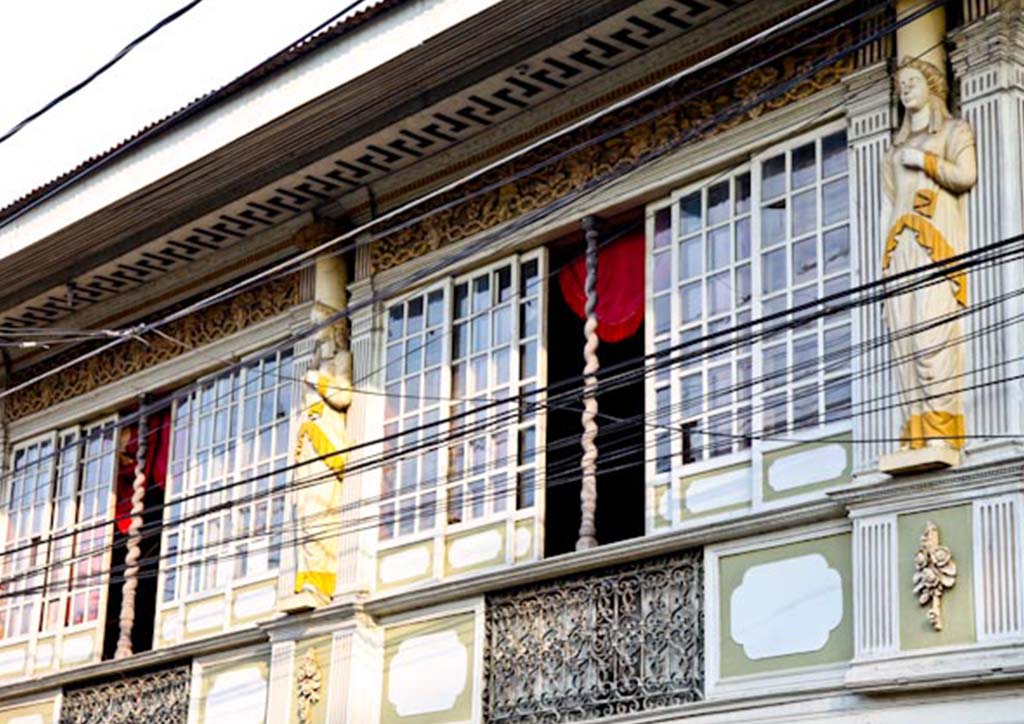
One extended family can best typify these houses for their economic studiousness, their cosmopolitan tastes, and their patriotic commitment, the Santos-Tiongson-Tanjosoy-Bautista clan, one of whose current scions, Basilidez “Dez” Bautista, is a renowned set designer and Bulacan cultural historian. Dez has lovingly restored one of the family’s period houses, that of his great-grandfather, Don Jose Bautista, into a showcase of late Spanish Colonial grandness. Originally built in 1855, the Don Jose Bautista House was reconstructed in the Neoclassical style in 1877. Don Jose Bautista used the house as a party and formal reception venue for Manila-based visitors in the 1880s and 1890s, which explains the use of female caryatids on the second-floor façade, a rare feature found in any colonial-era house. Like many bahay na bato of the period, the façade of the Don Jose Bautista house (whose ground floor is of stone and the second floor is of wood) abutted into the street, with a narrow pedestrian path defining the threshold; while a wide garden planted with fruit trees defined the rear part of the house. The entire house is actually held up not by the stone walls of the ground floor (which serves as a kind of “curtain” to the façade), but by a forest of hardwood columns or haligi, whose natural bend is preserved by the builders. An arched double-door, carved with intricate floral and vine motifs, and keyed by the finishing date of “1877,” originally led to the main staircase (the ground floor, called the zaguan, would have been used to store crops and carriages).
YOU MIGHT LIKE: Bacolod’s Gaston Ancestral House is glorious in reel and real life
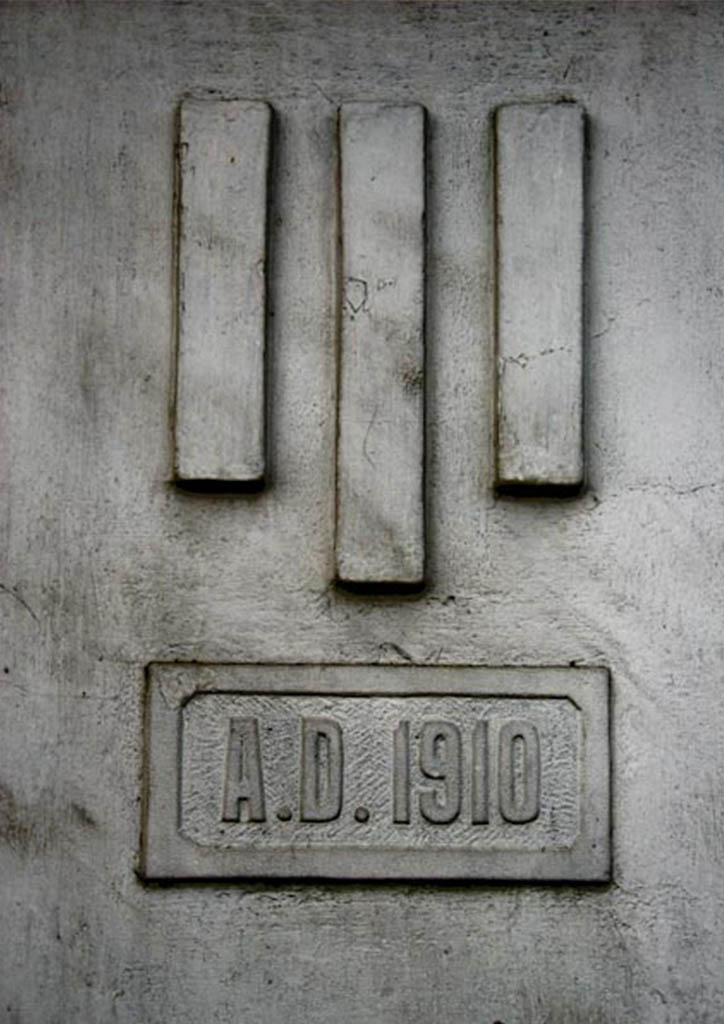
Once upstairs, one entered the caida, or receiving salon, with double doors to the right which led to the main sala (which in older days used to contain two bedrooms; and later, classrooms for a Catholic School), festooned with period furniture and paintings on the ceilings and walls. A painting on the caida commemorates the historical moment in late-June 1892 when Jose Rizal visited Malolos to confer with Don Jose Bautista and two other prominent Bulakenyos on this very spot about his plan to launch the Propagandist organization La Liga Filipina. To the back is the small but copiously-decorated chapel. To the left of the caida is the formal comedor (dining room), which led to the cocina (kitchen) and azotea (stone porch).
Besides being one of the remaining samples of late-19th Century ancestral houses in Malolos, the Don Jose Bautista house also reflects the abbreviated political autonomy of the Malolos Republic, serving as the headquarters of the Ministerio de Fomento or Ministry of Interior Affairs from January until late-March 1899, when the government evacuated Malolos in advance of the American military offensive during the Philippine-American War.
READ MORE: Leandro V. Locsin Partners reconstructs Casa de Nipa
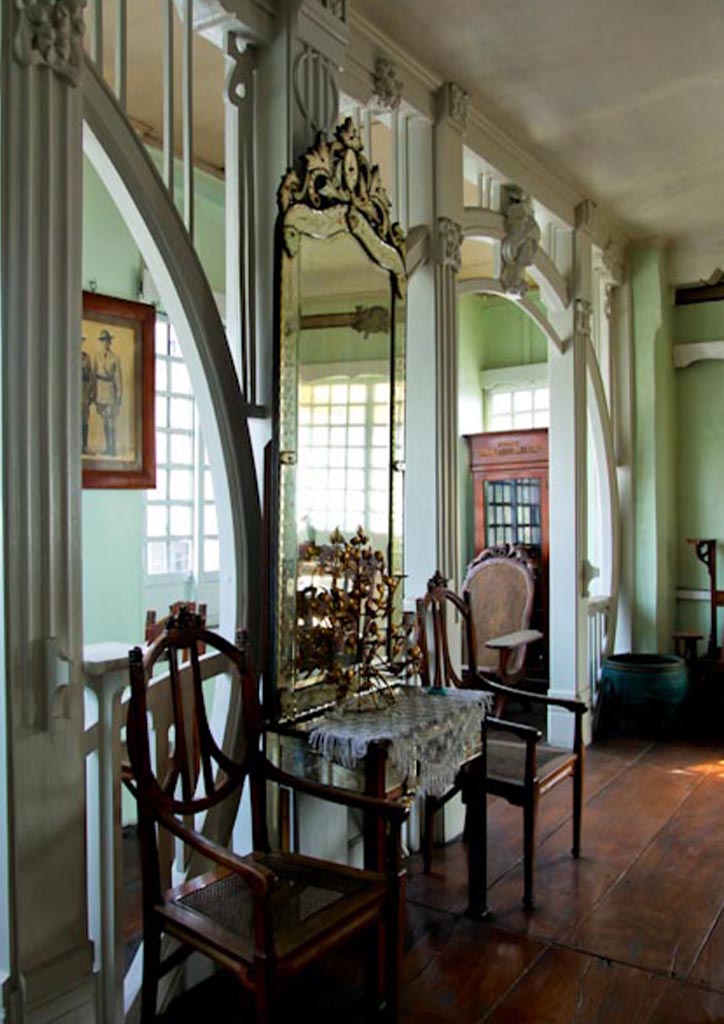
Don Jose’s most prominent son was Antonio Bautista (1878-1940), who first entered the Katipunan as a follower of General Isidro Torres, and then became an aide de camp to President Emilio Aguinaldo, charged with delivering the first family safely back to Cavite during the time of Aguinaldo’s desperate climb into the Cordilleras in late-1899. After the Philippine-American War, General Antonio Bautista renovated the ancestral Bautista-Tanjosoy House (first built in 1820) along what is now called Paseo de la Congreso to reflect the emerging trend of Art Nouveau. Finished in 1910, the Antonio Bautista House structurally reflects the older style of the bahay na bato: a ground floor storage area faced in stone and a second-floor living space in wood. However, the newer construction techniques of the tsalet style introduced by the Americans is also found, notably in the main stairway that leads directly out into the front porch to one side of the house (a feature also found in many simpler bahay kubo); extensions from the original house footprint made from clapboarding; glass panels of the sliding windows in the main facade; and galvanized iron sheets instead of clay tiles.
YOU MIGHT LIKE: Lacson Mansion Ruins, a neo-Romanesque memento mori
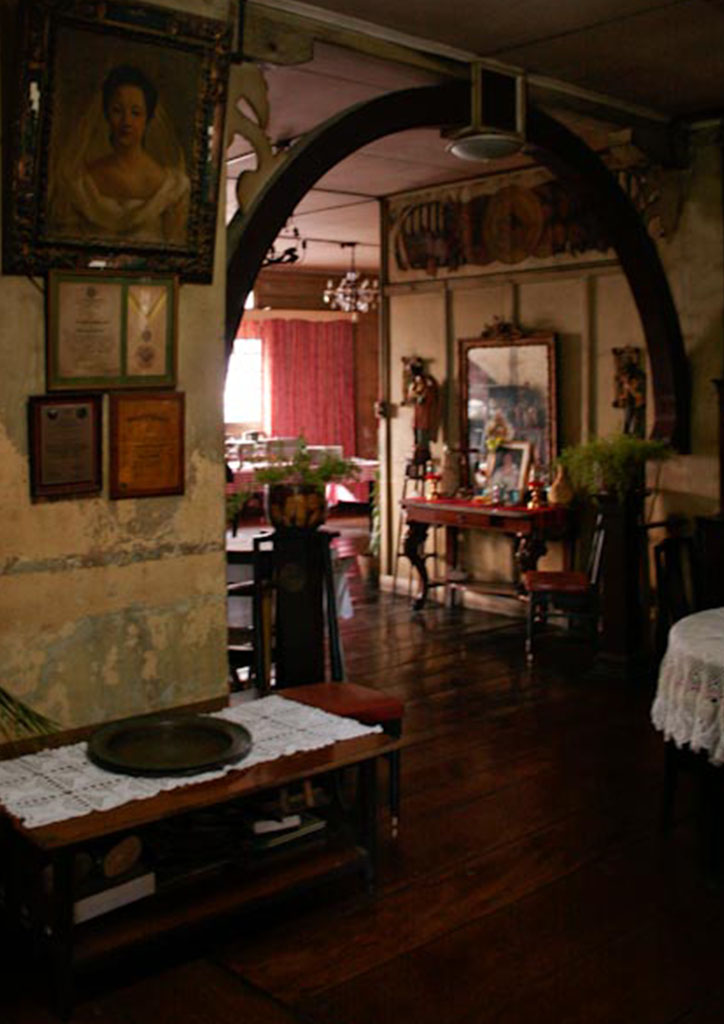
It is in the interior design, particularly the enlarged sala, that one can find an unprecedented and lavish stylistic transformation. A stone wall separates the sala from the comedor, but is pierced by two diamond-shaped oculus windows decorated with iron grills. Along the cornice-level frieze of the caida and comedor bordering the sides of the house, and throughout the separating wall and into the sala, are to be found painted motifs executed by Emilio Alvero, a graduate of the Academia de Dibujo y Pintura, which reflects the extraordinary translation of the organic Art Nouveau movement, in the form of vine tendrils, banana trees, birds, and Sino-Japanese still life. The made-to-order furniture and pierced doorway lintel panels echo this sensibility, done by the famed sculptor Isabelo Tampingco, and revel in the whiplash motifs pioneered by Alphonse Mucha and Victor Horta.
READ MORE: Jaro’s Casa Mariquit, a bahay na bato as graceful as its namesake

A third Malolos ancestral house shows the elegant transition from turn-of-the-century Art Nouveau bahay na bato to a monumental Art Deco tsalet of the early Thirties. The Dr. Luis Santos House, just a stone’s throw away from the Don Jose Bautista House, was rebuilt in 1932 for the famed ophthalmologist as both domicile as well as a clinic, and has been lovingly maintained by his heirs until the present. The house is fronted by a concrete and grill iron fence opening to a front lawn and driveway, centered on a sculpture fountain. Concrete steps mimicking porphyry marble lead to a double door that enters into the vestibule of the house, imposing with its enormous 4-meter tall ceiling, and the motif of lightning rods decorating its openwork transoms. The ground floor served as Dr. Santos’ lying-in clinic and office, with the living quarters on the second floor connected by a grand staircase embellished with a bronze statue lamp, and scroll-and-peacock motifs on its balustrade. The second floor is even more magnificent, centered on a square sala decorated by a circular ceiling mural executed by Fernando Amorsolo. The entire second floor is covered in lustrous hardwood finishes, all carved to follow the main motifs of waves, flowers, and peacocks. One side opens to a verandah fitted with stained glass panels; another side to the master’s bedroom and bath; and a third side to a chapel, the formal comedor, cocina, and a tower room accessed via a spiral staircase, where the good doctor was said to flee to when too many visitors were in the house. Even appliances from the Thirties to the Fifties are still preserved, from a kerosene refrigerator to a bulky vacuum-tube television set.
YOU MIGHT LIKE: Spanish, Chinese, Muslim, and Filipino motifs in Casa Sanson y Montinola in Iloilo
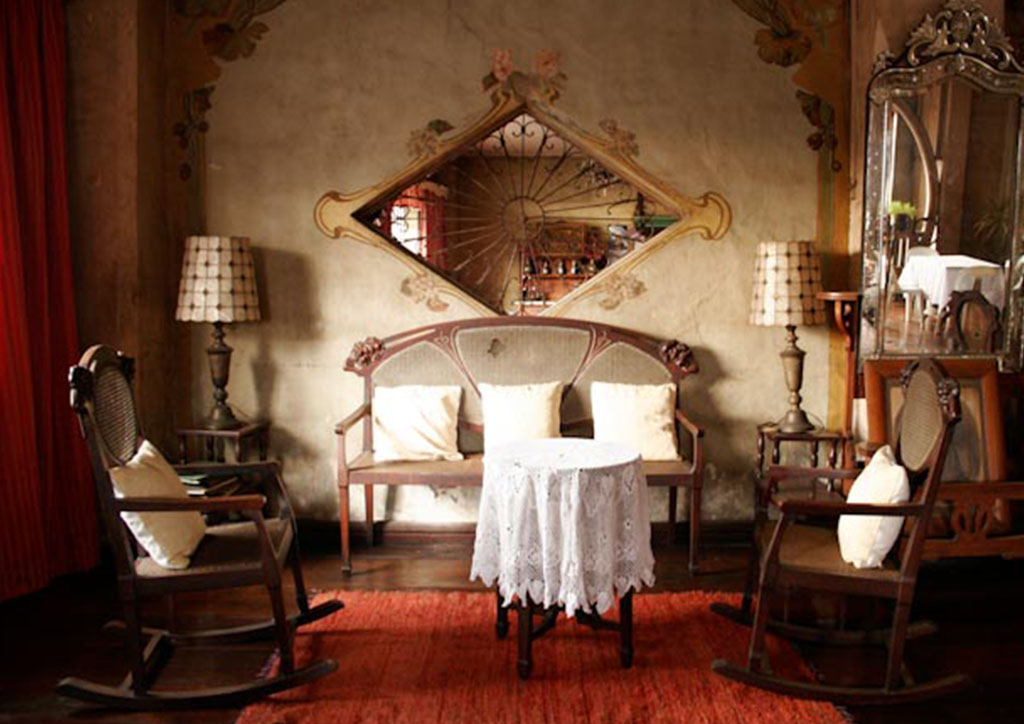
Filled with both memories of the past, and irreplaceable cultural treasures, these ancestral houses in Malolos should be maintained not only for the aesthetic enjoyment of future generations of visitors, but also for reconnecting the Malolos native’s present with their past, when their pivotal role as nurturers of Asia’s first republic, and servants of the people, were celebrated.![]()


